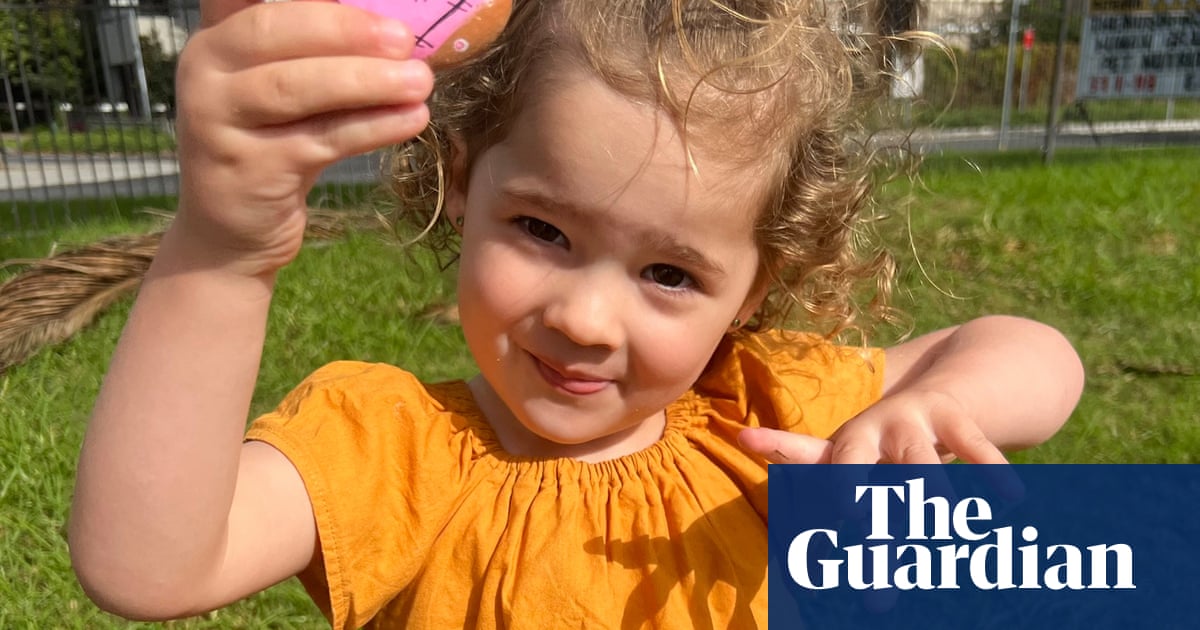The nurse who triaged a two-year-old girl who died of septic shock in regionalNew South Waleshas told an inquest she doesn’t think she would have activated a rapid paediatric sepsis pathway for her if even if she had access to the document at the time.
Pippa Mae White died on 13 June 2022, two months before her third birthday, after doctors at the hospitals in Cowra and Orange assumed she had an acute viral illness, rather than the bacterial infection that resulted in her death.
A coronial inquest resumed on Monday with evidence from Nikota Potter Bancroft, the registered nurse who triaged Pippa when she was taken to the Cowra emergency department before 2pm on 12 June.
At the time, Potter Bancroft recorded Pippa’s heart rate at a high 171 beats a minute, which the inquest previously heard is considered a “red zone” observation for sepsis.
Sign up for Guardian Australia’s breaking news email
Under questioning from the counsel assisting the coroner, Jake Harris, Potter Bancroft said she was aware of the paediatric sepsis pathway, a document which instructs that children with any “red zone” observations should be treated within 60 minutes.
The nurse, who had worked in the Cowra emergency department for about 18 months, said she knew about the pathway from her training but did not have access to the document at the hospital.
Potter Bancroft said even if she had been able to reference the pathway she “probably would have looked at it more closely but I still don’t think I would have agreed that she went on it”.
Harris asked: “What do you say to the proposition that you should have placed Pippa on the sepsis pathway and called for a rapid response?”
Potter Bancroft replied: “I think from the assessment I took, she didn’t meet the criteria.”
The inquest heard that Potter Bancroft had described Pippa as “lethargic” in her triage notes.
The nurse said she didn’t “think” this was the same as “decreased alertness, arousal or activity”, which the paediatric sepsis pathway states is a trigger for activating a rapid response when coupled with at least one “red zone” observation.
“Yes, Pippa looked very tired,” Potter Bancroft said. “She was obviously a sick kid who had been sick for days. But she was still completely conscious and alert and able to interact, even if it was negatively.”
She said she thought Pippa’s high heart rate might have been a reflection of her feeling anxious.
“I didn’t call for a rapid response,” she said. “I’m not sure how relevant that is to triage, that particular situation. In Cowra ED we don’t have a separate rapid response team. We don’t have an extra team we can call on.”
Sign up toBreaking News Australia
Get the most important news as it breaks
after newsletter promotion
The inquest heard that Potter Bancroft had worked until 10.30pm on 11 June 2022 and returned to the hospital to begin her next shift at 7am the next morning.
At the time Pippa’s mother, Annah, took the toddler to the ED, the inquest heard, every bed in the hospital was full and staff were preparing to admit another child who was being resuscitated in an ambulance.
The NSW deputy state coroner Joan Baptie is examining whether Pippa’s death was preventable and whether she received appropriate care in Cowra and Orange, and from the Newborn and Paediatric Emergency Transport Service team.
During the first week of hearings last July, the inquest heard that Pippa did not have a blood test until 4am on 13 June, after she was transferred to Orange hospital. It revealed she had a serious infection.
She was administered antibiotics and given an urgent chest X-ray, which showed she had pneumonia that had caused a “complete whiteout” of her left lung. She died that day.
Pippa’s father, Brock, told the inquest on Monday that his daughter’s death meant the loss of a “sparkle from the earth”.
“I walk around in a shell of my former self,” he said. “We want change. This can’t keep happening to other families.”
The inquest continues.
